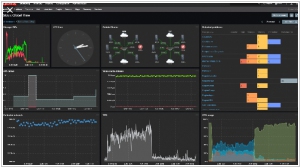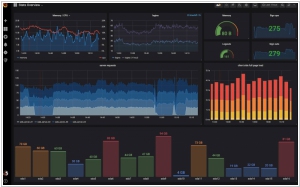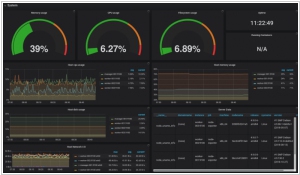Grafana vs Prometheus
July 22, 2023 | Author: Michael Stromann
See also:
Top 10 IT Monitoring software
Top 10 IT Monitoring software
Grafana and Prometheus are both powerful tools used in monitoring and visualization of data in the context of modern IT infrastructures. Prometheus is an open-source monitoring and alerting toolkit specifically designed for time-series data, capable of collecting metrics from various sources and storing them efficiently. It excels in scalability and is well-suited for dynamic, cloud-native environments. On the other hand, Grafana is a feature-rich open-source data visualization platform that works seamlessly with Prometheus and other data sources. It allows users to create customizable dashboards, charts, and graphs to present data in a visually appealing and easily understandable manner.
See also: Top 10 IT Monitoring software
See also: Top 10 IT Monitoring software
Grafana vs Prometheus in our news:
2019. Zabbix 4.2 adds built-in support of Prometheus data collection

Zabbix Team has recently unveiled the launch of Zabbix 4.2. This latest version introduces a comprehensive monitoring system equipped with cutting-edge features, including data collection and processing, distributed monitoring, real-time problem and anomaly detection, alerting and escalations, visualization, and more. Zabbix 4.2 significantly enhances data collection capabilities, supporting diverse methods such as push and pull from various sources like JMX, SNMP, WMI, HTTP/HTTPS, RestAPI, XML Soap, SSH, Telnet, agents, scripts, and more. Notably, the integration with Prometheus has been added as a new feature, allowing native support for the PromQL language. Additionally, the utilization of dependent metrics empowers the Zabbix team to efficiently gather a vast amount of Prometheus metrics. By making a single HTTP call, all the required data can be retrieved and subsequently reused for relevant dependent metrics.





